Wind energy fact check
Wind energy is a sustainable form of power generation that is favourable to conventional energy sources. Learn the facts about wind energy and use them to help reduce the spread of misinformation.
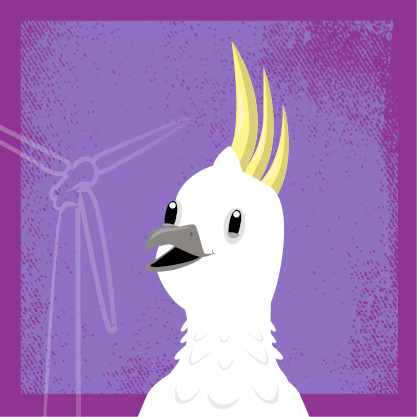
Birdlife effects
Fact: Wind farms cause a very small amount of bird deaths
Wind turbines are responsible for less than 0.01% of human-related bird deaths—much less than traditional energy production, high-rise buildings, or cats. In the United States, up to 327,500 bird deaths are caused by land-based wind turbines each year.
For comparison, the same source states that each year:
- cars cause up to 340 million bird deaths
- power lines cause 57 million
- building glass collisions cause up to 1 billion.
As for power generation, studies have found that nuclear and fossil fuel power plants cause over 2,000 times more bird deaths than wind farms.
Across Australia, cats are reported to kill more than 1 million birds every day.
In Queensland, wind turbines are strategically placed away from major bird and bat flight paths. We are also pioneering designs and technology to keep them safe.
Tackling climate change is essential to conserving our diverse bird populations, which are at risk globally. In North America, global warming poses an existential threat to two-thirds of bird species.

Reliability
Fact: Wind energy is a reliable and consistent source of clean energy
Wind energy provides a predictable supply of electricity over the longer term, despite daily and seasonal variances in wind strength. It currently makes up more than 10% of the state’s renewable energy generation.
A wind turbine only needs a gentle breeze to make the blades spin, creating movement energy called kinetic energy which renews itself as the wind blows. The rotation of the shaft allows the generator within the turbine to convert this kinetic energy into electrical energy.
Wind farms are not powered by back-up diesel or any other fuel—when the wind stops, turbines can still rotate for hours afterwards and produce energy.
Wind farms are also connected to clean energy storage technologies, such as batteries and pumped hydro, to ensure a consistent supply for customers—even on calm, windless days.
Wind farm developers select the most appropriate turbine models rated for the range of expected wind conditions at project sites. Some turbines are specifically designed to withstand high-wind speeds and extreme weather events.
Wind turbines in Queensland had an output of 2,183 gigawatt hours (GWh) in 2023.
A 3.5MW wind turbine can:
- power around 2,100 homes
- reduce greenhouse gas emissions by about 7,100 tons annually—equal to taking about 2,300 cars off the road.
In Far North Queensland, the 28-turbine Kaban Green Power Hub is producing enough power for about 100,000 homes. The MacIntyre Wind Farm near Warwick will produce enough power for around 700,000 homes.
A dramatic increase in wind energy that will reliably supply an even larger numbers of homes and businesses is expected over the next decade.
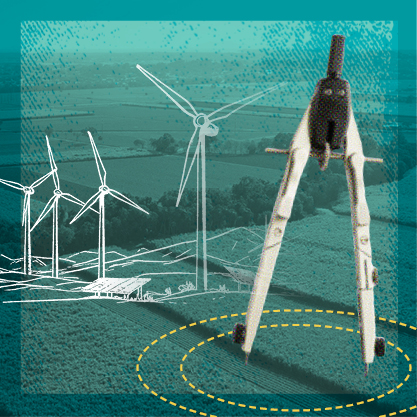
Space and land use
Fact: Wind farms have minimal impact on the usefulness and productivity of the land beneath them
Wind farms offer a sustainable power source, with a design that minimises land use.
The space required for wind farms changes from project to project and depends on local typography, site conditions, access routes and any network easements.
The turbines are mounted on high towers, leaving the ground below available for agriculture or animal grazing.
Each state has rules on wind farm setback distance—how close a wind turbine can be to homes and other areas (e.g. schools). In Queensland, the distance is 1.5km. If a planned wind turbine is too close to a home, the homeowner has the right to say no to the development or make a commercial agreement with the developer allowing it.
Research shows that Queensland will need to have the capacity to generate about 25,000MW of energy from large-scale wind and solar farms by 2035, which will require suitable space. The amount of energy would be made up of:
- 2,882MW from existing wind and grid-scale solar farms (as of June 2022)
- 12,200MW from new wind generation, which will need around 2,700 turbines and 540,000 hectares
- 10,000MW from new large-scale solar farms, requiring about 40,200 hectares.
With these forecasts, the additional renewable energy footprint will make up less than 1% of Queensland’s total landmass of 172,700,000 hectares.
When it comes to the removal of turbines, project owners and landowners work together to plan this responsibly, considering land care and future community needs.
The government has recently reviewed the planning guidance and clarified requirements for decommissioning wind farms and restoring areas that were cleared for construction.
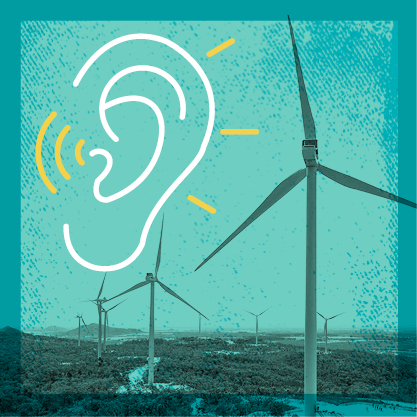
Noise levels
Fact: Queensland’s wind farms make very little noise
Studies show that noise from wind farms does not affect sleep more than traffic sounds.
Noise standards relating to wind farms vary by state. Our wind farm standards allow 37 decibels (dB) during the day and 35dB at night. The World Health Organisation guideline recommends a maximum of 45dB outside homes.
For comparison (figures from Yale University):
- A whisper is 25dB
- A refrigerator is 55dB
- A vacuum cleaner is 75dB
- A lawn mower is 107dB
Wind farms make a significant contribution to the reduction of carbon emissions by providing sustainable electricity for Queensland, while meeting the state’s sound guidelines.
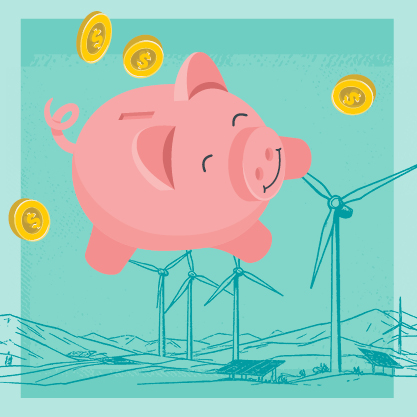
Cost effectiveness
Fact: Wind and solar are seen as the most cost-effective energy sources and they are becoming more affordable each year
Wind and solar continue to be the cheapest renewable energy sources, as reported by the International Energy Agency and CSIRO. This includes the costs of energy storage and transmission.
Data from the CSIRO shows that wind power has been getting cheaper over time. When solar and wind power are backed up with storage, their costs can be as low as coal and gas power.
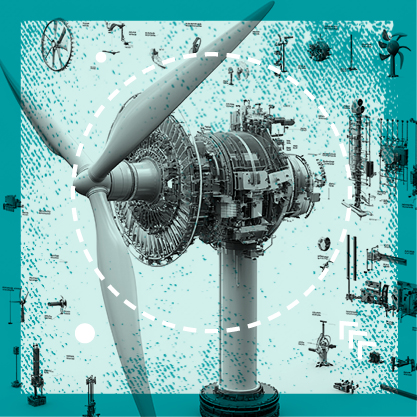
Lifespan and sustainability
Fact: Wind energy is an efficient, long-lasting power source and provides significant environmental benefits
The working lifespan of wind turbines is 20–30 years, with some operating for longer.
Although fossil fuels are used to produce their materials, and oil is used to lubricate the moving parts, wind turbines have some of the lowest lifetime greenhouse gas emissions among power generation technologies.
The ‘carbon payback’ period for wind turbines is approximately 5–12 months. This is how long it takes for a turbine to offset the amount of carbon used in its lifetime (including manufacture).
Wind turbines are mostly made from steel, composite materials like fibreglass or carbon fibre, resin, plastic, iron or cast-iron, copper and aluminium.
The recycling rate after a farm is decommissioned is 85–94% of a turbine's weight. Recycled turbine materials have been used to build bike shelters and sound barriers along highways, among other things.
New technology and better recycling practices are making wind power an important part of a greener economy.
Read more
- Last updated
- 22 May 2025